Abstract 3/2018
Table of content
Piotr Rosik, Tomasz Komornicki, Sławomir Goliszek, Przemysław Śleszyński, Wojciech Pomianowski – Traffic modeling in Poland with use of the municipal level of data aggregation
Kazimierz Jamroz, Krystian Birr, Romanika Okraszewska – Motorization rate forecasting at the regional level
Michał Pyzik, Arkadiusz Drabicki, Marek Bauer, Andrzej Szarata – Macrosimulation transport model of the city of Kielce and the Kielce Functional Area
Adam Ratajczak, Paweł Zmuda-Trzebiatowski, Waldemar Walerjańczyk – Functional evaluation of bicycle trip planners in the Poznań agglomeration
Abstracts
Piotr Rosik, Tomasz Komornicki, Sławomir Goliszek, Przemysław Śleszyński, Wojciech Pomianowski
Traffic modeling in Poland with use of the municipal level of data aggregation
Abstract: Modeling of personal road traffic at the national level in Poland has so far not been the subject of many in-depth spatial analyzes. This is mainly due to the lack of comprehensive traffic research covering the whole country. Most analyzes are carried out at the level of cities or agglomerations, and in recent years – also at the level of individual voivodships. The main objective of the article is to develop traffic modeling for the whole of Poland, in a detailed spatial scale (a large number of transport zones at the commune level) using statistical data indicating local conditions related to spatial and socio-economic structure and functional relations. The cognitive goal is to identify factors affecting the distribution and intensity of passenger vehicle traffic. The proposed methodology may in the future be the basis for establishing the rules for forecasting traffic on the entire country’s road network (based on observations of specific regional conditions). Awareness of regional and local conditions is an opportunity for territorialisation of transport policy (eg. as a part of integrated development programs – ZPR – proposed in the Strategy for Responsible Development).
Key words: traffic modeling, passenger cars, travel purposes, regional diversity, municipalities in Poland
Kazimierz Jamroz, Krystian Birr, Romanika Okraszewska
Motorization rate forecasting at the regional level
Abstract: Motorisation rate is one of the most commonly used, standardized indicator for the development of motorization. National and regional models to forecast motorization development have been developed and used in many countries. In Poland, detailed research on the factors of motorization development has not been carried out so far. The authors of the article took up the challenge to fill this gap and developed a method for forecasting the number of vehicles as a general measure and motorisation rate as a standardized indicator both at the level of the country, voivodships and districts. The article presents the assumptions of the concept of a three-level model taking into account the hierarchical structure of the territorial division of the country. The method of modeling and forecasting the motorization rate at the level of voivodships has been described in detail, along with a description of the stages related to determining the level of saturation of the analyzed area, selection of changes in the level of motorization and identification and selection of factors affecting the change in the level of motorization.
Key words: motorisation rate, modelling, forecasting
Michał Pyzik, Arkadiusz Drabicki, Marek Bauer, Andrzej Szarata
Macrosimulation transport model of the city of Kielce and the Kielce Functional Area
Abstract: This article describes the development framework of macrosimulation transport system model for the city of Kielce and its agglomeration area (KOF). The model was developed on the base on the comprehensive travel survey (KBR) results conducted in Kielce in 2015, which provided a basis for a comprehensive, up-to-date 4-step travel demand model reflecting the typical trip patterns in the Kielce city. This model was further extended to account in more detail for agglomeration trips (carried out within the KOF area) and external (transit) trips – for this purpose, the KBR results were extended with additional database sources, such as e.g. national-level (GUS) data on business and commuting trips. The study presents a detailed description of main stages of supply and demand transport model, as well as mathematical parameterisation derived from empirical and survey data – which may comprise a valuable contribution in terms of modern-day changes in travel behaviour and demographic shifts taking place in Polish cities. The study also presents results from simulation models developed for the 2025 and 2035 temporal horizons, which demonstrate what changes in transport system performance could be anticipated in 10 or 20 years’ time – and provide crucial indications for shaping the future transport strategy and policy in the Kielce city and the KOF agglomeration area.
Key words: Kielce, Kielecki Obszar Funkcjonalny, macrosimulation, transport modelling, Comprehensive Travel Study
Adam Ratajczak, Paweł Zmuda-Trzebiatowski, Waldemar Walerjańczyk
Functional evaluation of bicycle trip planners in the Poznań agglomeration
Abstract: Cycling is increasingly perceived as an alternative to car transport due to lower costs of operation as well as external costs. This is particularly true for urban areas, where the weaknesses of bicycle transport, such as low travel speed, are less important. However, the effective use of this mode of transport may require accurate trip planning. This planning should take into account the diverse preferences of users of this mode of transport. Spatial information used for planning should be also as free from errors as possible. The article presents a comparative analysis of two selected cycling trip planners – Naviki and Google Maps. The quality of routes generated by them in the Poznań agglomeration was assessed. A set of forty random routes was tested, of which thirty had their starting and ending points in the area of Poznań, and ten in the Puszczykowo commune. The analysis resulted with a conclusion that these planners differ from each other at the initial stage of reverse geocoding. In addition, the planners differ in some of the assumptions made in route planning algorithms. Nevertheless, the analysis showed that most of the planned routes were similar in both planners. Observed discrepancies resulted to a certain extent from map errors that occurred in both planners. The comparative analysis allows at least partial detection of such discrepancies despite the differences in the functioning of the planners themselves.
Key words: cycling; trip planners, Poznań agglomeration

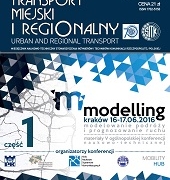 SITK RP
SITK RP 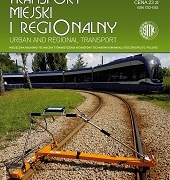
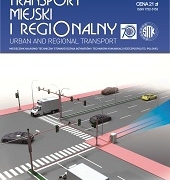 SITK RP
SITK RP 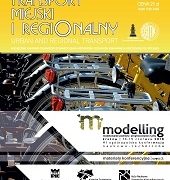
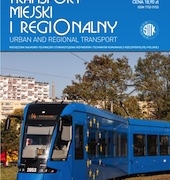 SITK RP
SITK RP 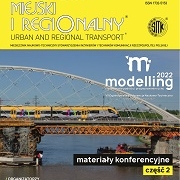 Wydawnictwa SITK RP
Wydawnictwa SITK RP 

